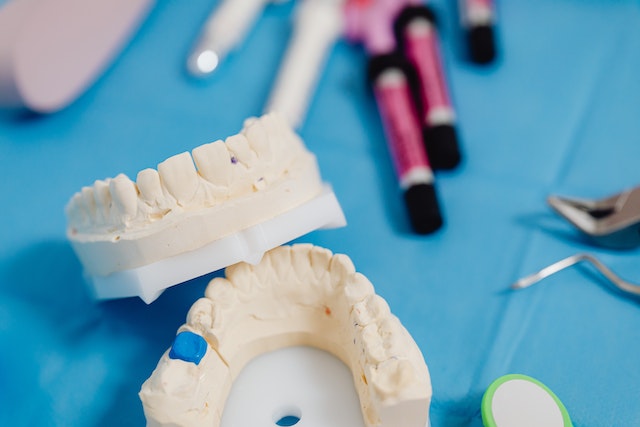Life is brief, so don’t put off doing the things that put a smile on your face. However, some dental abnormalities, such as crooked or crowded teeth, might undermine one’s confidence in their smile. The good news is that you can correct this problem using orthodontic retainers.
Retainers are a type of dental accessory that is used to hold teeth in place following orthodontic treatment. You’ve likely heard of retainers, but you might not know all about them. Therefore, this article will highlight the six things you need to know about retainers.
What Exactly Is A Retainer?
A retainer for teeth is a custom-made brace made of plastic or wires that holds your teeth together so they don’t move. Most dentists and orthodontists advise using a retainer to make sure your teeth stay straight after getting Invisalign, wire braces, or alignment surgery.
Nowadays, Invisalign is gaining popularity over braces in some cases to fix an overbite or misalignment case (that isn’t too severe).
There is no set price for Invisalign because the price depends on how many visits to the dentist and the aligners your issue requires.
Consultation with your dentist or orthodontist is the only method to receive a precise estimate for your personalized treatment plan. If you are a resident of North Carolina and wondering how much does Invisalign cost in North Carolina, then look up Bovenizer and Baker Orthodontics to get an estimate and a treatment plan.
It can take up to six months for the new position of your teeth to become permanent, but in most cases, you’ll need to use a retainer for the rest of your life to keep the position of your teeth (but only at night). Your dentist or orthodontist might take imprints of your teeth, conduct an oral exam, take intra-oral photographs of your mouth, and may require x-rays to fit you with a retainer.
Daily VS. Nightly Usage
As directed by your orthodontist, you must wear them. For the first two months, it is advised that you wear your retainers for around 20 hours per day for the majority of patients. However, during this time of heavy use, your teeth will gradually become more stable, allowing you to wear them while you sleep (or as instructed by your dentist).
You should take off your retainer just to eat, brush your teeth, and floss. After eating or brushing your teeth, it’s crucial to put your retainer back in place to prevent your teeth from shifting again. Although you might have to wear retainers to bed for the rest of your life, most people only need to wear them for a few years. How well your teeth remain in place following treatment will determine everything.
They Must Be Kept Clean:
To stop bacteria from growing on your retainer, you will need to clean it frequently. But many individuals are unsure of the best way to clean them. Simply use toothpaste and warm water to brush your retainer; using a different toothbrush to clean the retainers is best.
You can use mouthwash; just make sure it doesn’t include any alcohol to prevent harm to the equipment. Additionally, you must soak them in a denture-cleaning solution for 20 minutes. When cleaning your retainer, it’s vital to avoid using hot water because doing so could cause the material to deform.
Retainers can be Fixed or Removable:
Custom-made dental appliances called retainers are used after braces to keep teeth in their newly straightened positions. Both fixed and detachable varieties are available. Two types of removable retainers are constructed of wire and plastic and fit tightly over your teeth: Essix and Hawley.
While Essix is made of plastic and comes in clear retainers, they are typically uncomfortable because they come in contact with a natural tooth, whereas Hawley retainers are made of acrylic and metals and are comfortable since they don’t come in contact with your natural tooth.
On the other hand, the backs of your teeth are fused to the fixed retainers. In this situation, a wire is attached to the rear of your anterior teeth to prevent tooth dislocation. Fixed retainers don’t lose or break easily, but they are quite difficult to clean and maintain oral hygiene with. Because they can only hold some teeth in place to a certain extent in particular circumstances, you may still need to wear removable retainers.
How Long Do You Have To Wear Retainers?
One study suggests that you should keep wearing your retainer for up to a year after getting rid of your braces every day of the week. Then you should adhere to your dentist’s recommendations. They will advise you as to whether you should continue wearing your retainer and whether you should wear it at night. In order to maintain your bite and tooth position, it is normally recommended that you wear your retainer at night permanently.
These suggestions can be different if your dentist or orthodontist requires you to wear a retainer for purposes other than to straighten your teeth. You might need to wear your retainer solely during specific periods of the day if you have a speech problem. When it comes to how long to wear retainers, it’s always better to heed the advice of your dentist or orthodontist.
Extra Care Is Crucial:
You can do a few things to make your retainer as comfortable as possible. The first is to refrain from consuming particularly tough or sticky meals because they may cause additional retainer damage. To stop bacteria from growing, you must frequently wash your retainer with soap and water. Be careful handling your retainer as well to prevent breaking it. Additionally, it is advised to visit your dentist for checkups regularly.
Conclusion:
You want to do everything you can to maintain your smile if attaining straight teeth is the foal for you. You’ll undoubtedly be motivated to use your retainer when you first remove your braces or complete your Invisalign treatment to preserve your newly straightened smile. Although, wearing a retainer may get tiresome with time. However, if you want your attractive smile to remain for the long term, don’t let yourself get frustrated and quit wearing or caring for your retainer.










